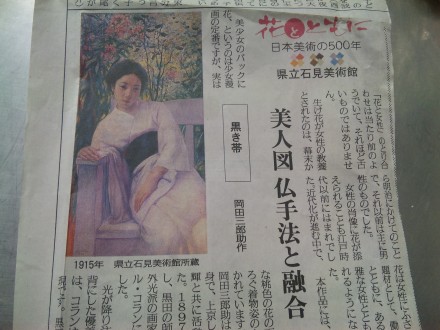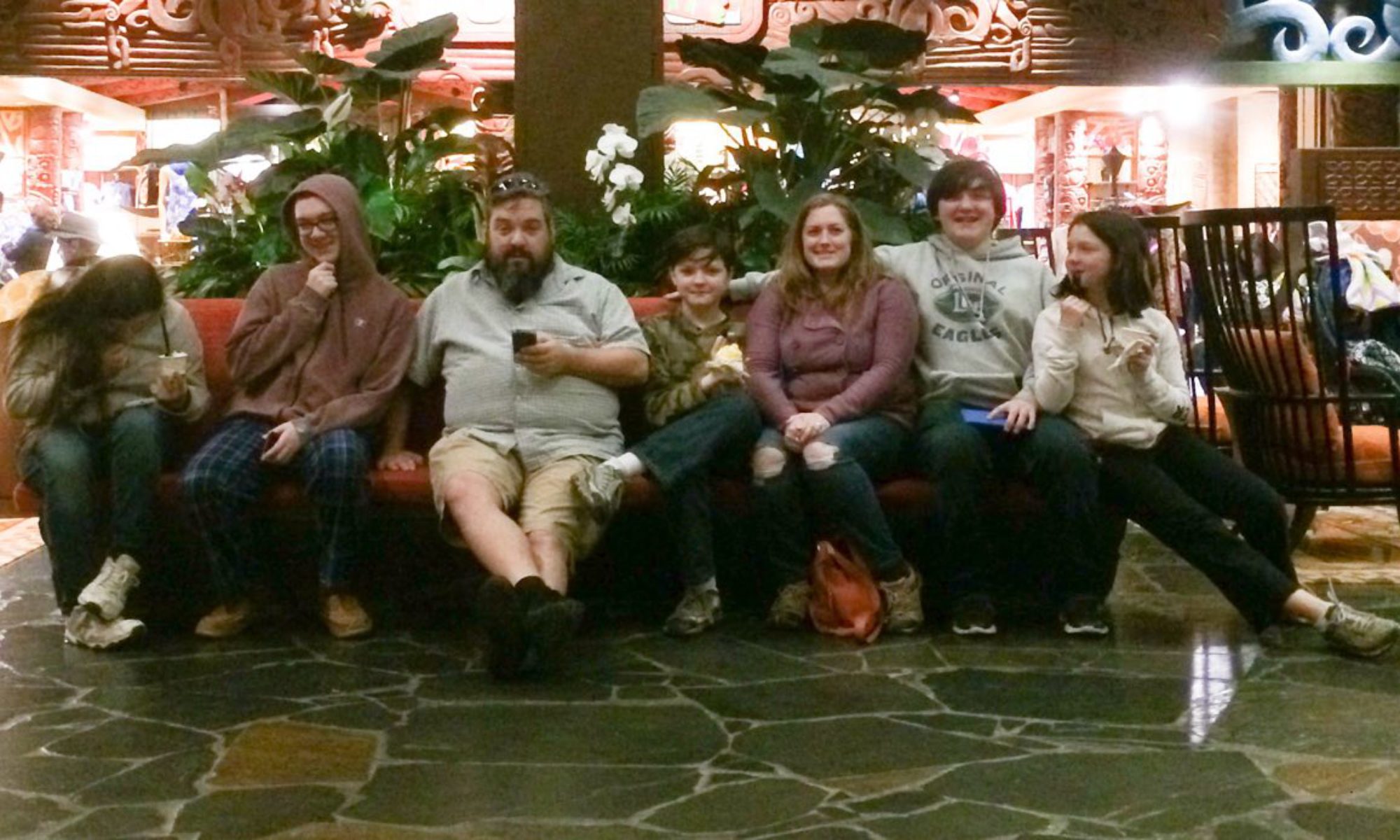
Oh the rush of unexpectedly being smitten by beauty!
I had bought some new drinking glasses at the Daiso 100 ¥ Shop. Daiso provides scraps of newspaper, on worktables placed at the end of the cash register aisles, so that breakables can be wrapped for safe transport.
I picked up a handful of scraps and began to cover each glass and tuck them into my shopping bag.
The sad, frustrating truth is that I cannot read Japanese. The many vertical characters on the newspapers’ pages blurred together into mysterious meaninglessness.
When I glanced down at the stack of paper to grab a fresh sheet, I found this lovely young woman staring up at me! There were few photos printed on the paper scraps that day, and so the contrast – this beauty standing out amongst the rows of gibberish – was especially striking. The painting, in art’s universal language, was something I could understand. I tucked the scrap into my purse for safe keeping.
This morning, I had brunch with my friends Sonia and Miyo and, as I went to retrieve a pen, I felt the saved newspaper in my purse and excitedly showed Miyo. She translated it for me.
I learned that the 1915 painting is called “The Black Obi” and it was painted by Okada Saburosuke. His style was heavily influenced by Kuroda Seiki, whose real name was Kuroda Kiyoteru. Seiki went to Paris as a young man, where he lived in an artist colony that included several Americans. He even studied English. Such things are difficult to comprehend, as I tend to forget that Japanese were in the US prior to World War II.
(Once before, this very thought really got to me after watching Letters from Iwo Jima, where Ken Watanabe’s character, General Kuribayashi, speaks of his life in California before the war and how he socialized with actors, and even received silver pistol as a gift, but then returned home when the war broke out to fight for Japan.)
One of the thing I love about The Black Obi is that it is the first time I’ve ever seen a Japanese woman in the context of an Impressionistic painting. It is exquisitely surreal as if she was cut from elsewhere and affixed to a Monet or a Renoir.
Such talent!
Seeing this painting made me wonder — Would this style of art would have continued in Japan if history’s course had been different?
More on Japanese art history can be found here.

See also the Volksdeutsche in World War 2.
What a lovely image.
My family tree includes many Japanese living in CA before WWII. Some actually moved back to Japan right before the war… my great-grandfather was drafted as a chaplain in the Japanese army in Burma, my great-grandma was hospitalized, and my grandfather and his brothers were kids on the streets trying to survive without knowing the language
My great-uncle remained in CA and internment camp
Bethany,
Thank you for sharing your story! War is a horrible thing. I can’t imagine what it would be like to be living on the streets as a child, let alone not understanding the language.
You have me on the edge of my seat — what happened after that?? :)
Enjoyed reading through your blog just now & subscribed via Google Reader.
Much love from Japan,
SJA
On the streets of Japan, my grandpa and his brothers were so immersed in the culture of survival that apparently they forgot English. After the war, the family was reunited but then decided to ship my grandpa and his younger brother back to CA for school. That was when my grandpa realized how far behind they had fallen and how humiliating it was to not have a basic education. But they came to the US, and my grandpa eventually joined the army (oddly enough, my other grandfather, also from CA, was the same age and in the US navy… stationed outside Japan).
Anyway, my grandpa ended up marrying a Japanese woman who was in the US for school, and my mom was born here, but the family moved to Japan when she was in jr. high iirc, and my grandparents still live in Tsujido. My grandpa has done extensive research of his family history and of local Japanese American experiences in general, and he just completed his doctorate.
Hearing about the influences and unimaginable things that they went through has kind of helped to ease the generational culture clash/bafflement with a healthy dose of understanding… But speaking of how strange it is to remember that the Japanese were in CA before the war, I was even more surprised to visit the TX cultural museum and see their display on the Japanese in TX prior to the war. Obviously it was a much smaller portion of the population, but still. Fascinating.
Awww, thanks for the feedback on my blog. :-) I have been very much enjoying yours.
~Bethany
Wow, that is beautiful! I am guilty of having to at least glance through – and sometimes sit and read – old newspaper used as packing. It can be so fascinating!